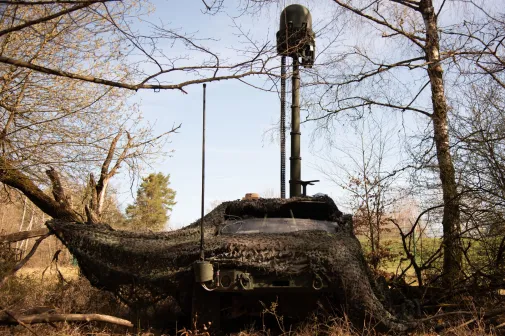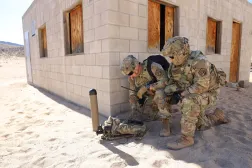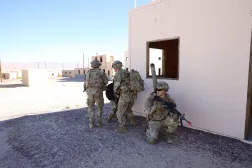Army tests algorithms for classifying new signals for first time at annual experiment

The Army tested artificial intelligence and machine learning algorithms for the first time at an annual experimentation to understand unknown signals on the battlefield.
The effort was part of the Cyber Quest event held in July at Fort Eisenhower, Georgia. Cyber Quest is an experimentation venue where the Army seeks to test emerging technologies on either existing or desired capabilities brought by contractors that respond to specific problem statements from the service in order to help inform future requirements and concepts.
Among the 19 technologies across a broad range of stakeholders tested at this year’s gathering, officials sought to apply algorithms to process and identify so-called signals of interest at the tactical edge.
More so than previous conflicts, such tools will be imperative in future fights where sophisticated adversaries will possess advanced electromagnetic spectrum capabilities designed to locate U.S. forces and jam their communications. In order to thwart these systems, the American military must have countermeasures against them.
However, if soldiers encounter a signal not previously labeled or in their library, countermeasures can’t be developed. During the Cold War, it could take weeks to months between the time a signal of interest was detected, sent back to a lab, analyzed, countermeasure developed and countermeasure delivered to the field.
On the modern battlefield, that likely won’t be sufficient to win.
“That’s key as we move further forward to both reducing the manpower that we need at the edge, but also getting somewhere close to that machine speed processing that is an end goal,” Maj. James Harryman, Cyber Quest lead exercise planner and a U.K. exchange officer at the U.S. Army’s Cyber Center of Excellence, said in a July interview.
Software company DataShapes AI participated at Cyber Quest, putting their algorithms and sensors to the test.
“We’re generating unique waveforms and seeing what kind of categorization it gives us. We’re seeing a lot of success out there and the maturity of some of these ML algorithms,” Col. Gary Brock, capability manager for electronic warfare, who is responsible for developing requirements for new EW systems, said in an interview.
Logan Selby, president and CEO of DataShapes AI, said the company deployed its software to edge devices that could be scattered throughout the battlefield and do real-time detection and classification of signals.
“There’s a signal here in the spectrum — and then [we need to figure out] what is it? We were able to detect them in real time at those edge devices and then classify them on the edge devices as well … We can actually learn signals in real time on the edge devices as well,” he said, noting they demonstrated this at Cyber Quest.
Selby said they’re seeking to enhance kill chains and increase the speed of decision-making for commanders.
“With the speed of battle as it is today and the stuff constantly changing, signals constantly changing the environment, us empowering that soldier — whether they’re a classically trained electronic warfare specialist, or they’re a fueler or a truck driver or somebody that is not classically trained — our tool is extremely intuitive, where it’s allowing them to learn these signals in real time,” he said.
The experimentation at Cyber Quest and desire to test these types of classification tools fits in line with the Army’s larger electronic warfare data pilot to determine what the service needs to be able to rapidly reprogram systems on the battlefield.
Brock said this experimentation ties into the pilot and will soon lead into a Maneuver Fires Integration Experiment at Fort Sill, Oklahoma.
He also noted that as users learn more about AI and ML capabilities related to signal classification, that knowledge will filter back to product managers overseeing ongoing development of EW materiel and requests for information from industry under programs of record.
“Unique to that is as we look at the data structures required to train those algorithms on the fly, we’re feeding that over to the [Army Cyber Command] data pilot team so that we’re working on those,” Brock said.






